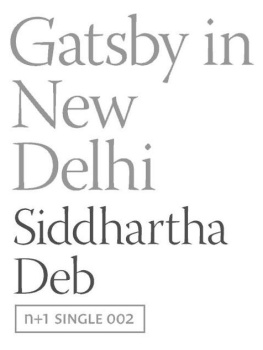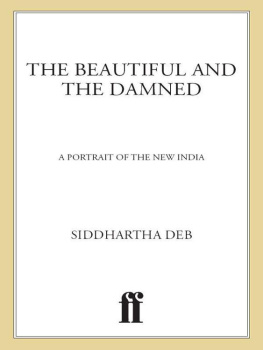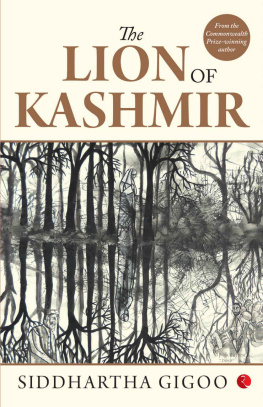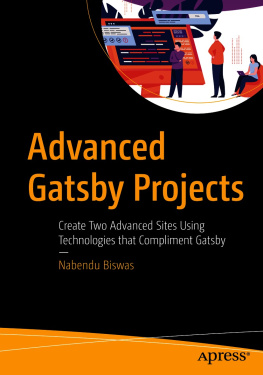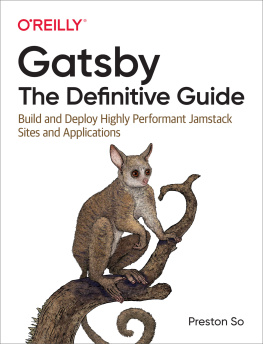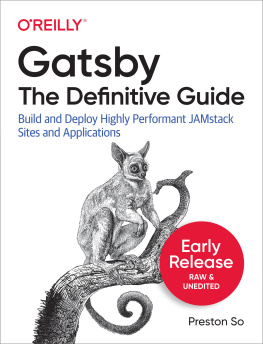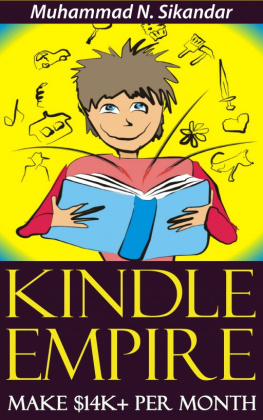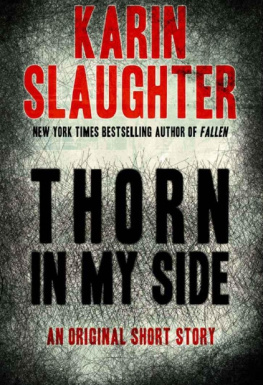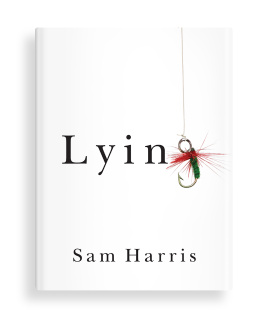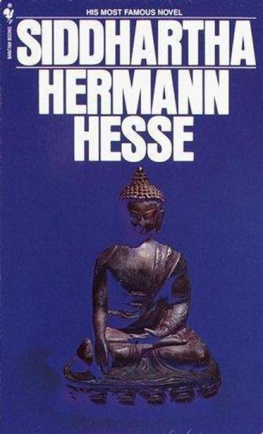Siddhartha Deb - Gatsby in New Delhi (Kindle Single)
Here you can read online Siddhartha Deb - Gatsby in New Delhi (Kindle Single) full text of the book (entire story) in english for free. Download pdf and epub, get meaning, cover and reviews about this ebook. year: 2011, publisher: n+1 Foundation, Inc., genre: Detective and thriller. Description of the work, (preface) as well as reviews are available. Best literature library LitArk.com created for fans of good reading and offers a wide selection of genres:
Romance novel
Science fiction
Adventure
Detective
Science
History
Home and family
Prose
Art
Politics
Computer
Non-fiction
Religion
Business
Children
Humor
Choose a favorite category and find really read worthwhile books. Enjoy immersion in the world of imagination, feel the emotions of the characters or learn something new for yourself, make an fascinating discovery.
- Book:Gatsby in New Delhi (Kindle Single)
- Author:
- Publisher:n+1 Foundation, Inc.
- Genre:
- Year:2011
- Rating:5 / 5
- Favourites:Add to favourites
- Your mark:
- 100
- 1
- 2
- 3
- 4
- 5
Gatsby in New Delhi (Kindle Single): summary, description and annotation
We offer to read an annotation, description, summary or preface (depends on what the author of the book "Gatsby in New Delhi (Kindle Single)" wrote himself). If you haven't found the necessary information about the book — write in the comments, we will try to find it.
Gatsby in New Delhi (Kindle Single) — read online for free the complete book (whole text) full work
Below is the text of the book, divided by pages. System saving the place of the last page read, allows you to conveniently read the book "Gatsby in New Delhi (Kindle Single)" online for free, without having to search again every time where you left off. Put a bookmark, and you can go to the page where you finished reading at any time.
Font size:
Interval:
Bookmark:
Gatsby in New Delhi
Once I became aware of Arindam Chaudhuris existence, I began to find him everywhere: in the magazines his media division published, flashing their bright colors and inane headlines from little newsstands made of bricks and plastic sheets; in buildings fronted by dark glass, behind which earnest young men imbibed Arindams ideas of leadership; and on the tiny screen during a flight from Delhi to Chicago, when the film I chose for viewing turned out to have been produced by him. It was a low-budget Bombay gangster film with a cast of unknown, modestly paid actors and actresses: was it an accident that the film was called Mithya ? The word means falsehood, appearances, a liethings I would have much opportunity to contemplate in my study of Arindam.
Every newspaper I came across carried a full-page advertisement for Arindams private business schools, the Indian Institute of Planning and Management (IIPM), with Arindams photograph displayed prominently. It was the face of the new India, in closeup. His hair was swept back in a ponytail, dark and gleaming against a pale, smooth face, his designer glasses accentuating his youthfulness. He wore a blue suit, and his teeth were exposed in the kind of bright white smile I associate with American businessmen and evangelists. But instead of looking directly at the reader, as businessmen and evangelists do to assure people of their trustworthiness, Arindam gazed off at a distant horizon, as if pondering some elusive goal.
There were few details about the program or admission requirements in these advertisements, but many small, inviting photographs of the Delhi campus: a swimming pool, a computer lab, a library, a snooker table, Indian men in suits, a blond woman. A fireworks display of italics, exclamation marks, and capital letters described the perks given to students: free study tour to Europe etc. for twenty-one days, world placements, Free Laptops for all. Stitching these disparate elements together was a slogan: Dare to Think Beyond the IIMsthe prestigious state-sponsored business schools against which IIPM competed. The new India needed a new kind of university, and a new kind of attitude, and Arindam, said the ads, was the man who could teach you how to find it.
IIPM formed the center of Arindams empirethe school was not only his first source of wealth, but had also produced nearly all of his employees. It had also become the target of much hostile scrutiny from journalists and bloggers, who insisted that IIPM was a factory for worthless degrees, banking tuition by churning out ever greater numbers of graduates who, if they didnt get a job from Arindam, would be unable to get one at all. In todays India, the very rich rarely come under such suspicion; the glow of admiration that surrounds them is too intense. Arindam had achieved great wealth and prominence, partly by projecting an image of great wealth and prominenceand yet somehow that glow eluded him.
+++
Ive spoken to the boss about you, Sutanu said. He said, Why does he want to meet me?
Sutanu ran the media division of Ariams company from a basement office where there was no cell reception, and it took many calls and text messages to get in touch with him. When I finally reached him, he sounded affable enough, suggesting that we have lunch in a South Delhi market known as GK II. We met at Flames, an Asian Resto-Bar with a forlorn statue of Buddha tucked away in the corner.
Sutanu was in his 40s, a dark man with a bushy moustache and glasses, his raffish 1960s air complemented by a bright blue shirt and a red tie patterned with elephants. He was accompanied by Rahul, a journalist who worked at one of the magazines published by Arindam. Although they couldnt have been there long, their table held two packs of Navy Cut cigarettes, a partly empty bottle of Kingfisher, and a battered smartphone that thrummed insistently throughout our conversation.
The boss is a great man, and sure, his story is interesting, Sutanu said. The question is whether hell talk to you.
Arindam Chaudhuri had started out in 1996 as the proprietor of a lone business school. Founded by Arindams father, it had beenSutanu said dismissivelya small, run-of-the-mill place located on the outskirts of Delhi. But Arindam expanded it to nine branches in major Indian metros, and now he was going international. He had an institute in Dubai and had allied with a Belgian management school with campuses in Brussels and Antwerp. He was about to open an institute in London, and was planning another in an old factory building in Pennsylvania. Arindams media division included a newsweekly, the Sunday Indian perhaps the only magazine in the world with thirteen editionsand three business magazines. He also owned a software company, a consulting division that managed the HR component of multinationals, and a new outsourcing company, which claimed to produce the entire content of the online Guardian , as well as proofreading and copyediting the Daily Mail .
Theres also a film division, and hes produced a major Bollywood blockbuster, Sutanu said.
It was meant to be a blockbuster, Rahul said quietly. But it flopped.
Yeah, yeah, no big deal, Sutanu said. Hes on other blockbuster projects. Hes a man of ideas. So sometimes they flop. He lit a cigarette and waved it around, the rings on his hand flashing. What hes doing, hes using intellectual capital to make his money. But people dont get that and because hes been badmouthed so much, hes become suspicious. Hes been burnt by the media. You know, cynical hacks they are. They make up stories that hes a fraud. A Johnny-come-lately. Everyone asks, Yaar , but where does all that money come from?
There was a moment of silence as we contemplated this question.
They dont ask these things of other businessmen, Sutanu said. Thats because when the mainstream media does these negative stories on him, just hatchet jobs you know, theyre serving the interests of the big industrialists. The industrialists dont like him because our magazines have done critical stories on them. The government doesnt like him and harasses him all the time. They say, You cant use the word Indian in thame of your management school because we dont recognize your school. They send us a letter every six months about this. Then, the elite types are after him. The Doon School, St. Stephens, Indian Institute of Management people. There were these bloggers writing silly stuff about him, saying that the institute doesnt give every student a laptop as promised in the advertisements. You want to know how he makes money? Its simple. There are two thousand students who pay seven lakhs [about $15,000] each. The operating costs are low. You know how much teachers get paid in India. So the money gets spun off into other businesses.
We ate hot and sour soup and drank more beer, our conversation widening out to include our careers and lives, and the unforgiving city of Delhi. Rahul told us a story about covering the war in Iraq and being arrested by Saddam Husseins Republican Guard while crossing over the border from Jordan. When it was time to depart, I felt reluctant to break up the drunken afternoon bonhomie but nevertheless asked, When do I get to meet Arindam Chaudhuri?
The good thing about the boss is that hes a yes or no sort of person, Sutanu said. Youll find out in a couple of days whether he wants to meet you.
+++
Why did I want to meet Arindam? Because I thought he was a key: to figuring out the new India, its obsession with wealth, and what that obsession meant and amounted to. The evidence of that wealth lay in plain sight all around, so much so that the plainness seemed to obscure some important truth. I could see it in the new road sweeping from the airport through South Delhi, turning and twisting around office complexes, billboards, and a granite-and-glass shopping mall on the foothills of the Delhi Ridge that, when completed, would be the largest mall in Asia. Within this landscape, with its promise of Delhi as another Dubai or Singapore, moved the inconsequential masses of the not-rich and the aspiring-to-be-rich, on foot and on two-wheelers, packed into decrepit buses or squeezed into darting yellow and black autorickshaws. The beggar children who performed somersaults at traffic lightsthe boys displaying menacing moustaches inked on to their facesfocused their efforts at the Toyota Innova minivans and Mahindra SUVs waiting at the crossing, straining their stunted bodies up toward the high windows behind which the rich sat in cool, perfumed clouds of satisfaction.
Next pageFont size:
Interval:
Bookmark:
Similar books «Gatsby in New Delhi (Kindle Single)»
Look at similar books to Gatsby in New Delhi (Kindle Single). We have selected literature similar in name and meaning in the hope of providing readers with more options to find new, interesting, not yet read works.
Discussion, reviews of the book Gatsby in New Delhi (Kindle Single) and just readers' own opinions. Leave your comments, write what you think about the work, its meaning or the main characters. Specify what exactly you liked and what you didn't like, and why you think so.

